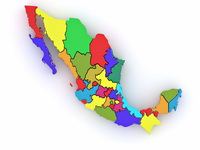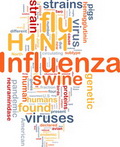
H7 strikes again
Dr Ilaria Capua [ also in Spanish, see below ] 18 July, 2012 Mexico is affected by what appears to be a major outbreak of H7N3 Highly Pathogenic Avian Influenza (HPAI), since the infection already seems to be widespread in a densely populated poultry area, mainly in layers. The information available indicates that veterinary authorities are implementing control measures, and due to the rapid spread of infection, these measures are behind the epidemic curve.This has already occurred in the past. Previous outbreaks of H7 have also been devastating: the Italian 1999-2000 H7N1 epidemic with 413 outbreaks and 16 million birds culled, the Dutch 2003 H7N7 epidemic with 30 million birds culled and 241 outbreaks; and the Canadian 2004 outbreak, also caused by H7N3, which affected 53 farms with 17 million birds depopulated. These outbreaks were all characterized by similar features, including high density of poultry farms in the affected areas and extensive spread between holdings that were in close proximity. Read More

Working towards the future
Dr Ilaria Capua 6 June, 2012 In our modern and globalised society, influenza viruses know no boundary and are able to potentially spread efficiently and quickly through the various international trade and human travel networks. Furthermore, the ever changing nature of these viruses through mutations and reassortments makes them unpredictable and in constant evolution. With this in mind it is clear that we need to develop new approaches to attempting to grade the pandemic risk posed by certain animal viruses, based on a sound scientific approach. We do not want to be taken by surprise again, as we were in Spring 2009 with the unexpected emergence of H1N1p.Read More
One Health, One Flu?
Dr Ilaria Capua 1 May, 2012 The emergence and spread of the pandemic H1N1 2009 virus from the animal reservoir raises questions on the future approach to influenza virus infections. Evidence demonstrates that influenza virus genes migrate across continents and animal species assembling themselves in combinations which threaten animal and human health, resulting in panzootics like H5N1 or pandemics H1N1 2009. The latter originated from the animal reservoir, containing a unique combination of genes from three species and two hemispheres. Mapping gene movements across species and national borders and identifying mutations and gene constellations with pandemic potential or virulence determinants is essential to enact prevention and control strategies at a global level.Vast improvements in capacity building have been achieved following the H5N1 global crisis. Read More
Surveillance for avian influenza in poultry 2.0; reloaded
Dr Ilaria Capua 4 April, 2012 Prior to the emergence and spread of H5N1, surveillance for avian influenza in poultry was by and large carried out with two objectives, namely - exclude or confirm HPAI as a causative agent of episodes of sudden mortality and establish whether outbreaks of non-specific clinical disease (respiratory, enteric or reproductive) could be attributed to infection with a virus of low pathogenicity. In the case for which passive surveillance revealed the presence of a HPAI, the outbreak would be stamped out and the virus eradicated. In the case of a low pathogenicity avian influenza infection, voluntary control programmes based on disease control measures and possibly vaccination for non H5/H7 strains was implemented.A further change in the expected outcome of surveillance efforts was led by scientific evidence which suggested that LPAI viruses of the H5 or H7 subtype could mutate and become highly pathogenic. Read More






